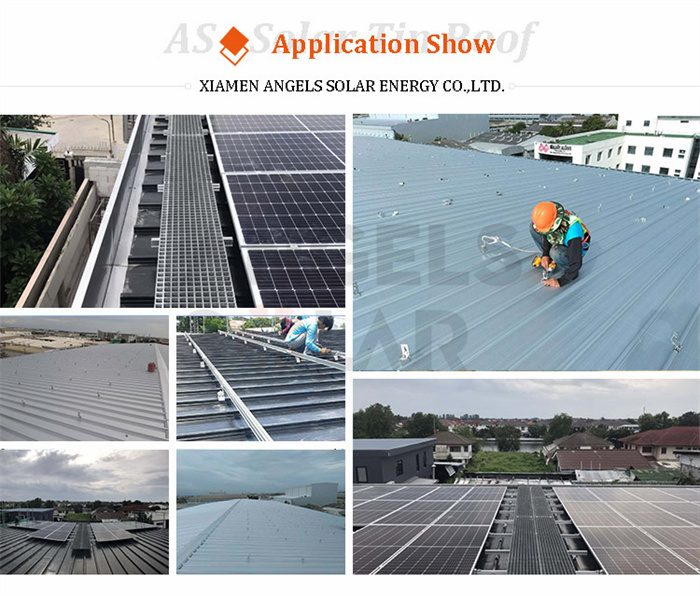A rooftop photovoltaic power station, or rooftop PV system, is a photovoltaic (PV) system that has its electricity-generating solar panels mounted on the rooftop of a residential or commercial building or structure. The various components of such a system include photovoltaic modules, mounting systems, cables, solar inverters and other electrical accessories.
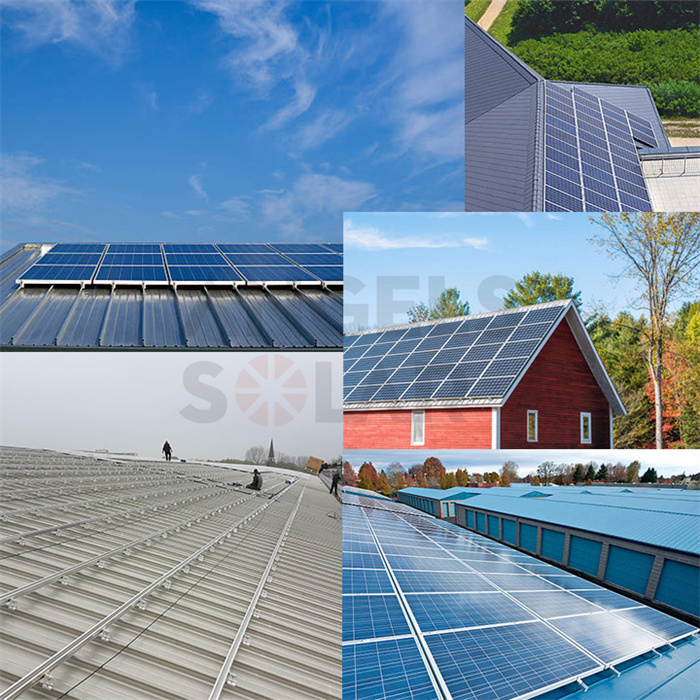
Rooftop mounted systems are small compared to ground-mounted photovoltaic power stations with capacities in the megawatt range, hence being a form of distributed generation. Most rooftop PV stations in developed countries are Grid-connected photovoltaic power systems. Rooftop PV systems on residential buildings typically feature a capacity of about 5 to 20 kilowatts (kW), while those mounted on commercial buildings often reach 100 kilowatts to 1 Megawatt (MW). Very large roofs can house industrial scale PV systems in the range of 1-10 Megawatts.
What are the different types of solar mounting systems for roofs?
* Sloped roof mounting systems.
* Flat roof mounting systems.
* Solar shingles and BIPV.
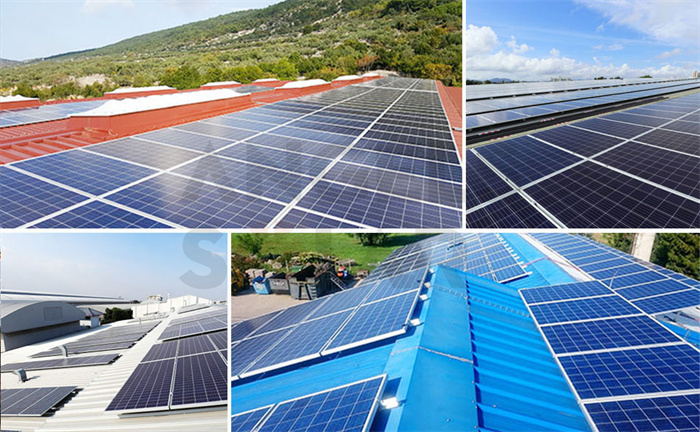
Sloped roof mounting systems
When it comes to residential solar installations, solar panels are often found on sloped rooftops. There are many mounting system options for these angled roofs, with the most common being railed, rail-less and shared rail. All of these systems require some type of penetration or anchoring into the roof, whether that’s attaching to rafters or directly to the decking.
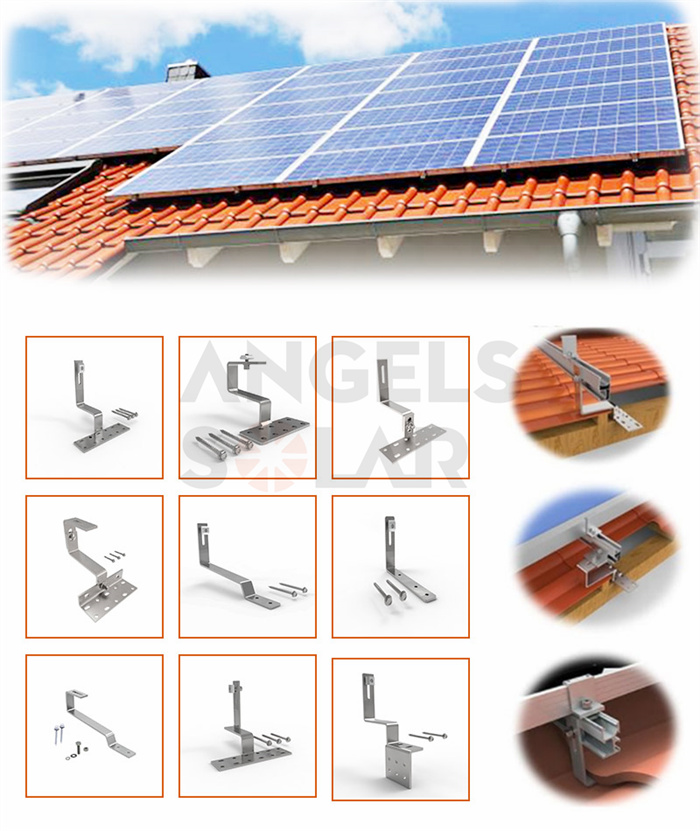
The standard residential system uses rails attached to the roof to support rows of solar panels. Each panel, usually positioned vertically/portrait-style, attaches to two rails with clamps. The rails secure to the roof by a type of bolt or screw, with flashing installed around/over the hole for a watertight seal.
Rail-less systems are self-explanatory—instead of attaching to rails, solar panels attach directly to hardware connected to the bolts/screws going into the roof. The module’s frame is essentially considered the rail. Rail-less systems still need the same number of attachments into the roof as a railed system, but removing the rails reduces manufacturing and shipping costs, and having fewer components speeds up install time. Panels are not limited to the direction of rigid rails and can be positioned in any orientation with a rail-free system.
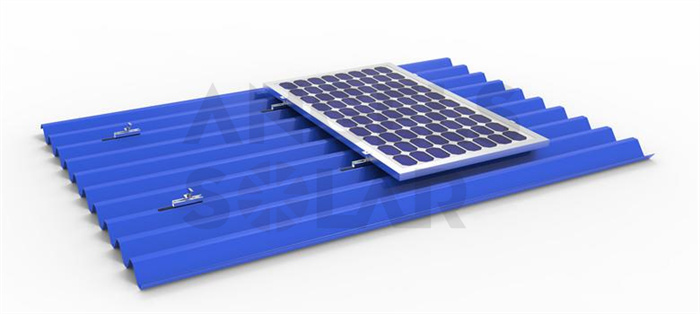
Shared-rail systems take two rows of solar panels normally attached to four rails and removes one rail, clamping the two rows of panels on a shared middle rail. Fewer roof penetrations are needed in shared-rail systems, since one entire length of rail (or more) is removed. Panels can be positioned in any orientation, and once accurate positioning of the rails is determined, installation is quick.
Once thought to be impossible on sloped roofs, ballasted and non-penetrating mounting systems are gaining traction. These systems are essentially draped over the peak of a roof, distributing the system’s weight on both sides of the roof.
Strain-based loading keeps the array almost suctioned to the roof. Ballast (usually small concrete pavers) might still be needed to hold the system down, and that extra weight is positioned overtop load-bearing walls. With no penetrations, installation can be incredibly quick.
